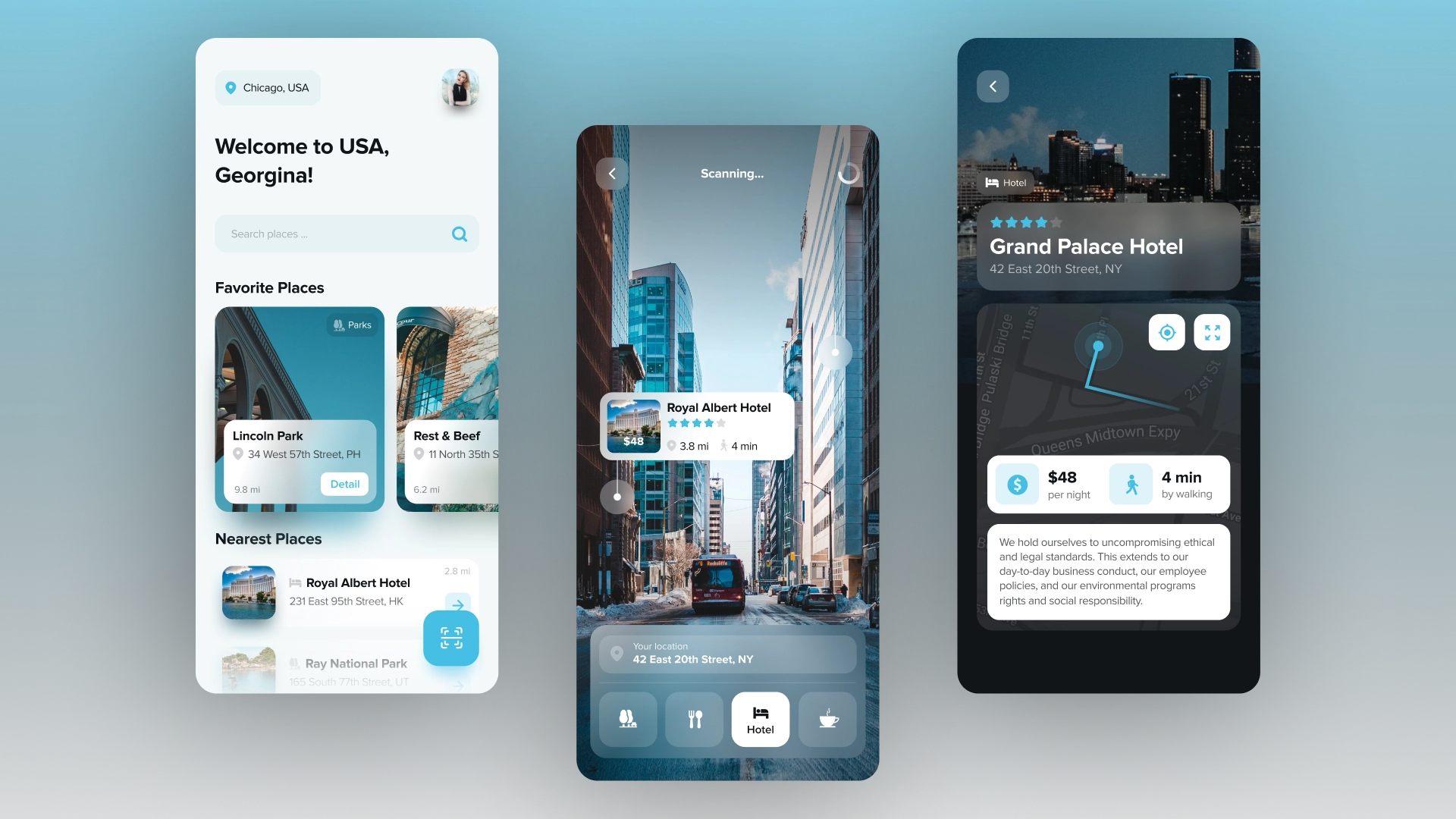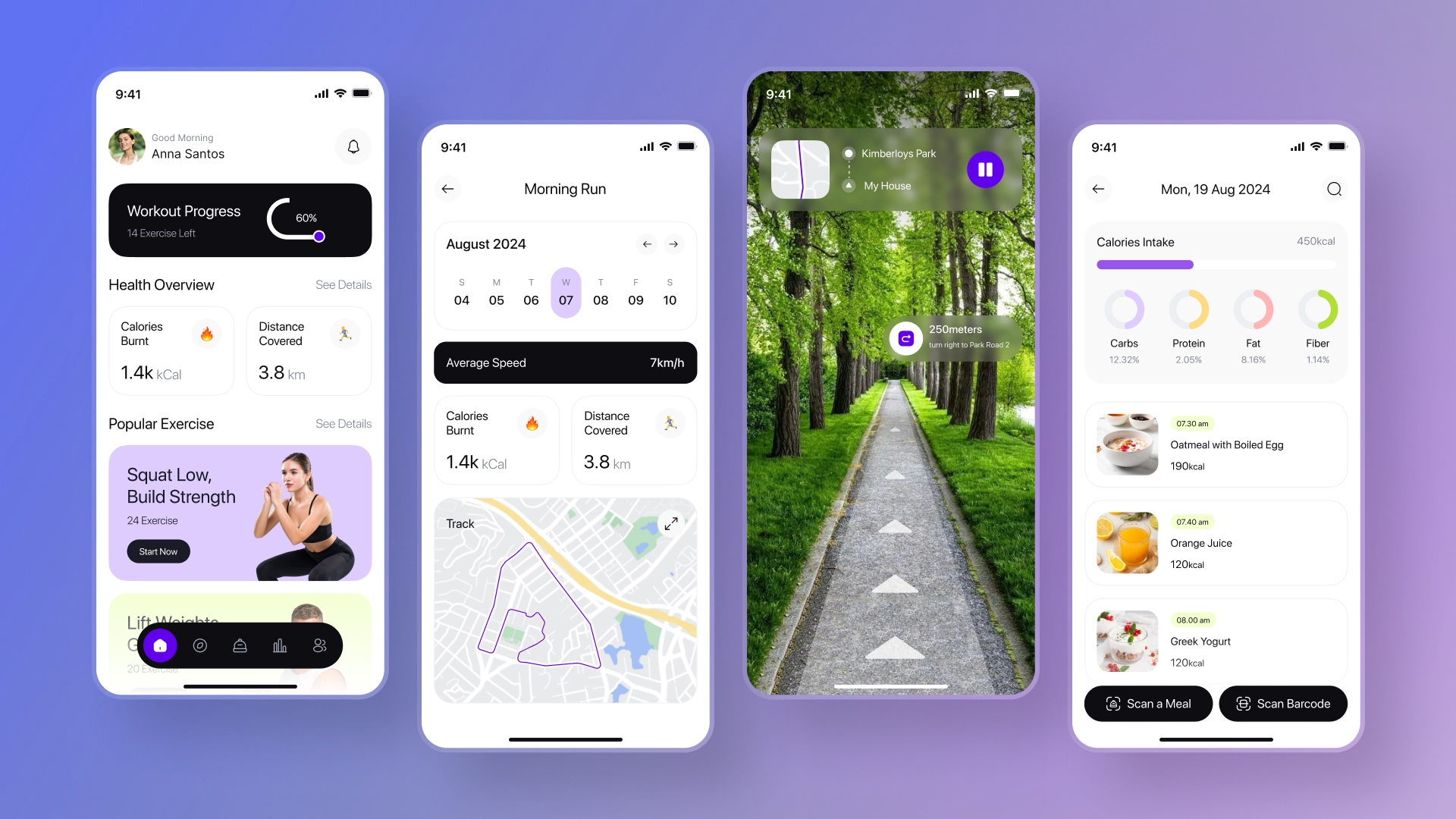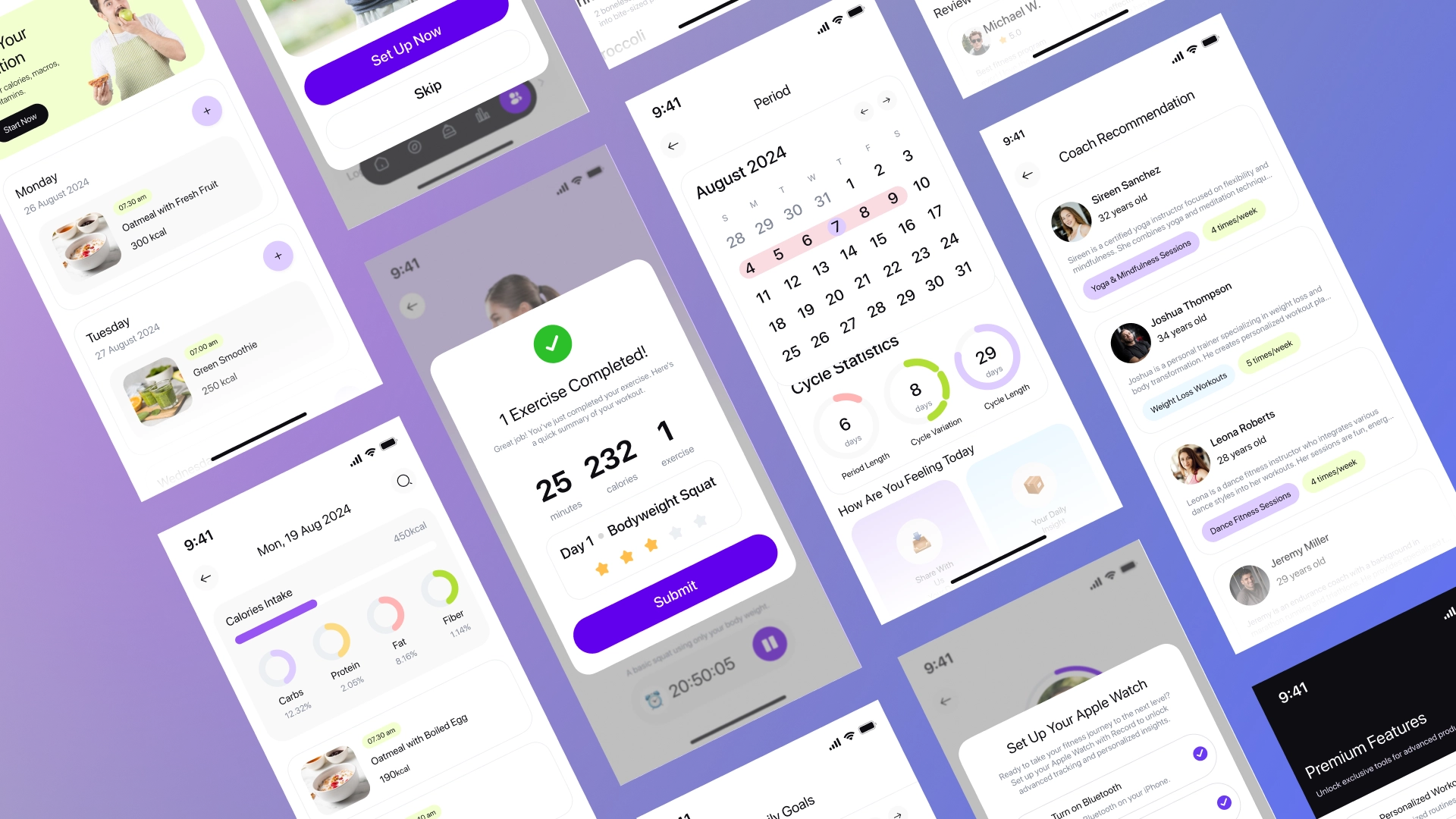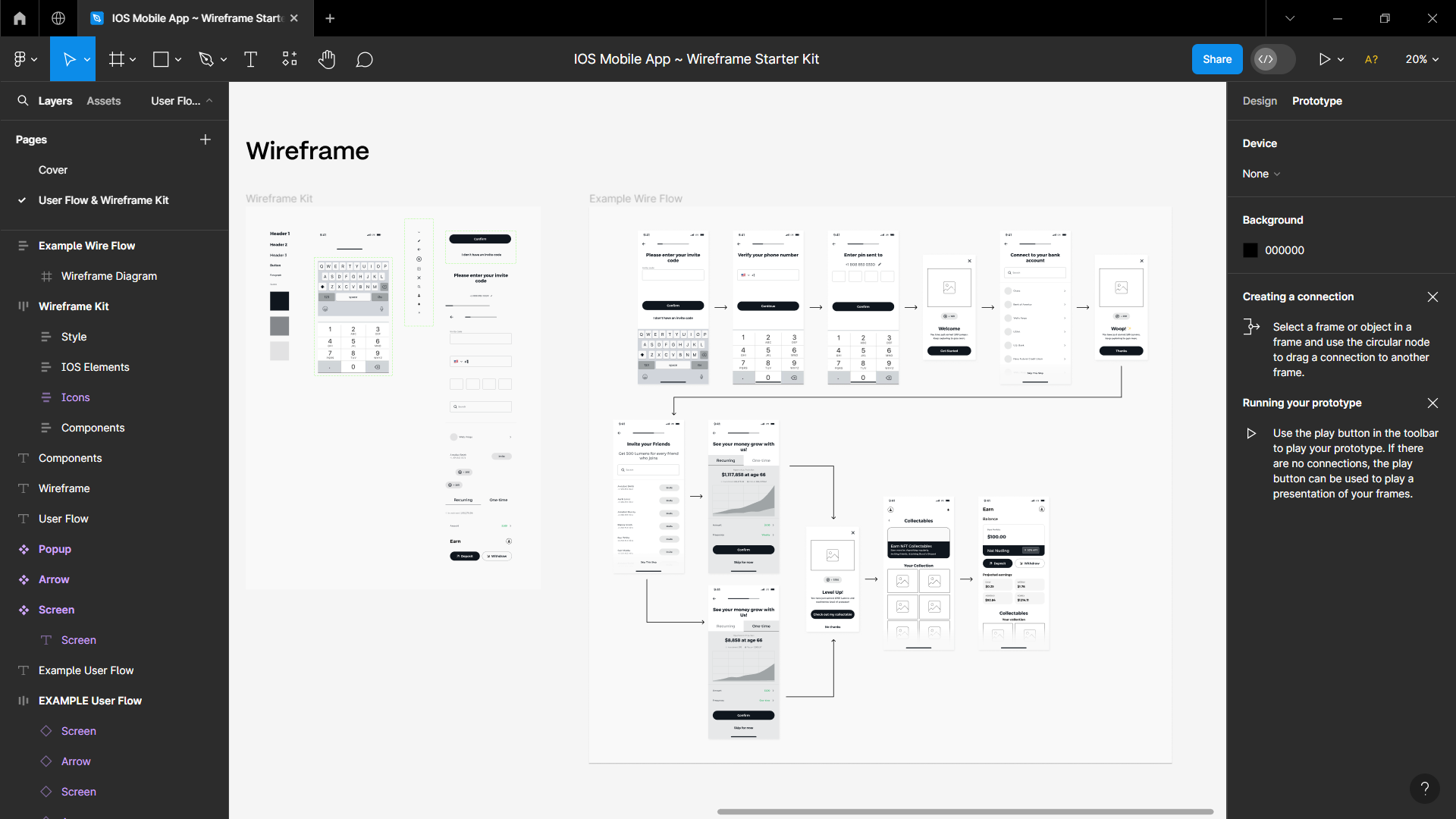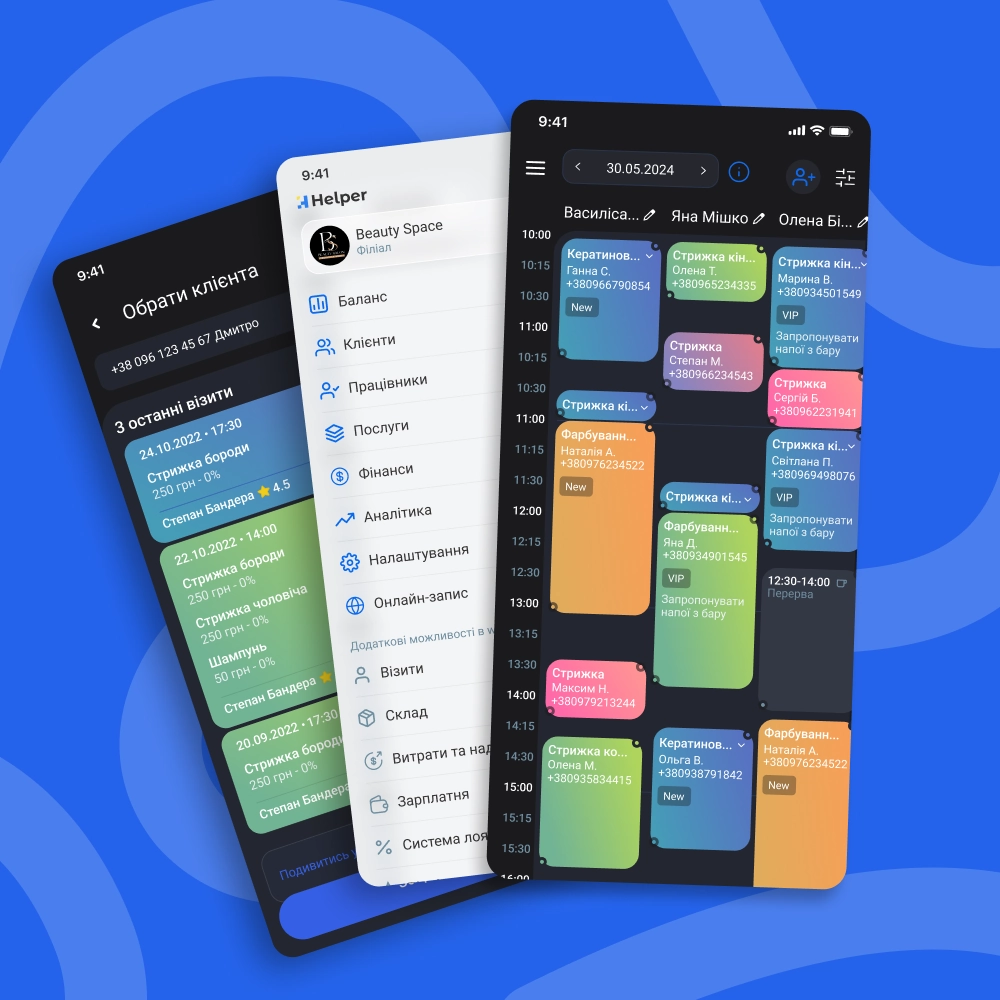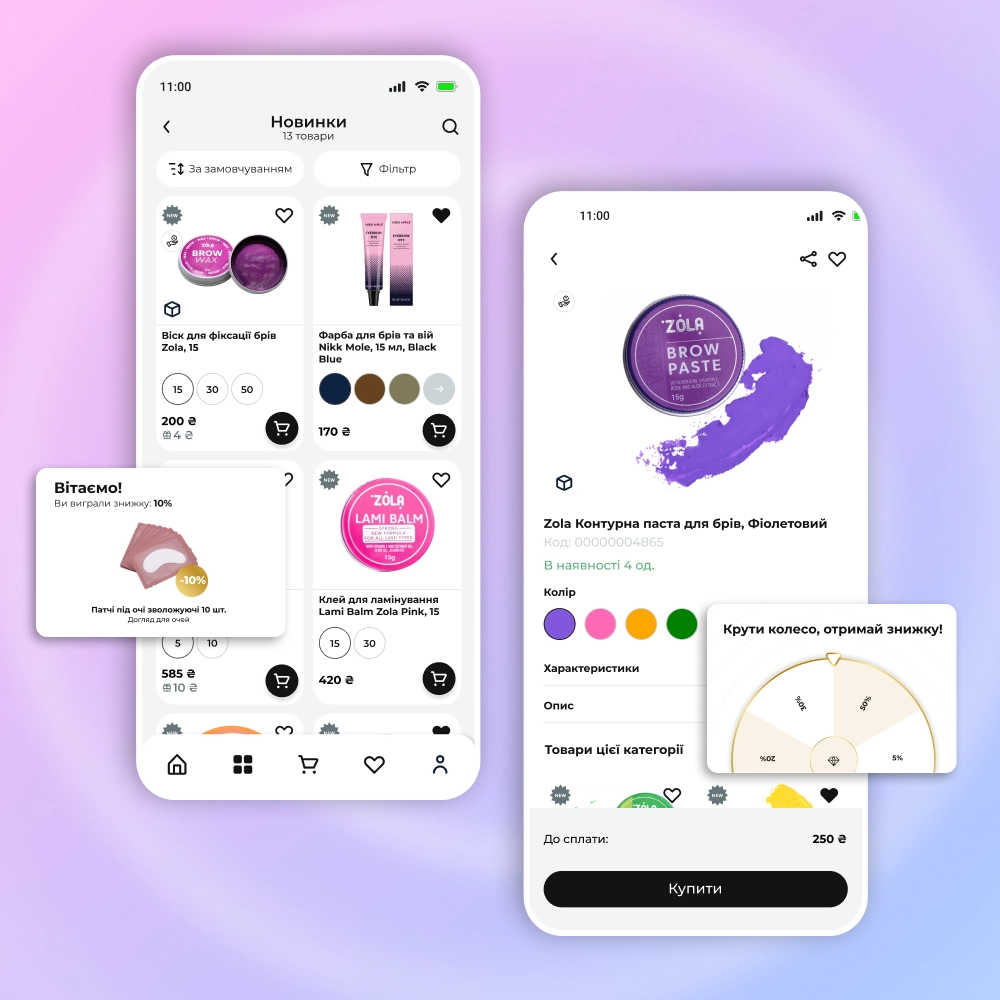







Mobile apps
Expertises
Mobile apps with 2D/3D configurators

Mobile apps with AI bots, assistants and recommendations

Mobile CRM / ERP with chat interface and PWA



eCommerce apps with a configurator and CRM module



Custom mobile app and PWA development
Today, business cannot do without remote management systems. Clients are used to receiving service in one click, and it is important for teams to manage processes without being tied to the office. Therefore, mobile applications are becoming not just a convenient addition, but an important tool for sales, service, and control.
At AVADA MEDIA, you can order the development of an application for iOS and Android, as well as PWA applications that go beyond the standard functionality. Our specialists create advanced mobile B2B and B2C solutions: CRM for managing customers and transactions on a smartphone and tablet, online stores with product configurators and services with AI agents for service automation. With us, you will get the best mobile application that will become a growth point, strengthen the company's competitive advantages and open up opportunities for scaling.
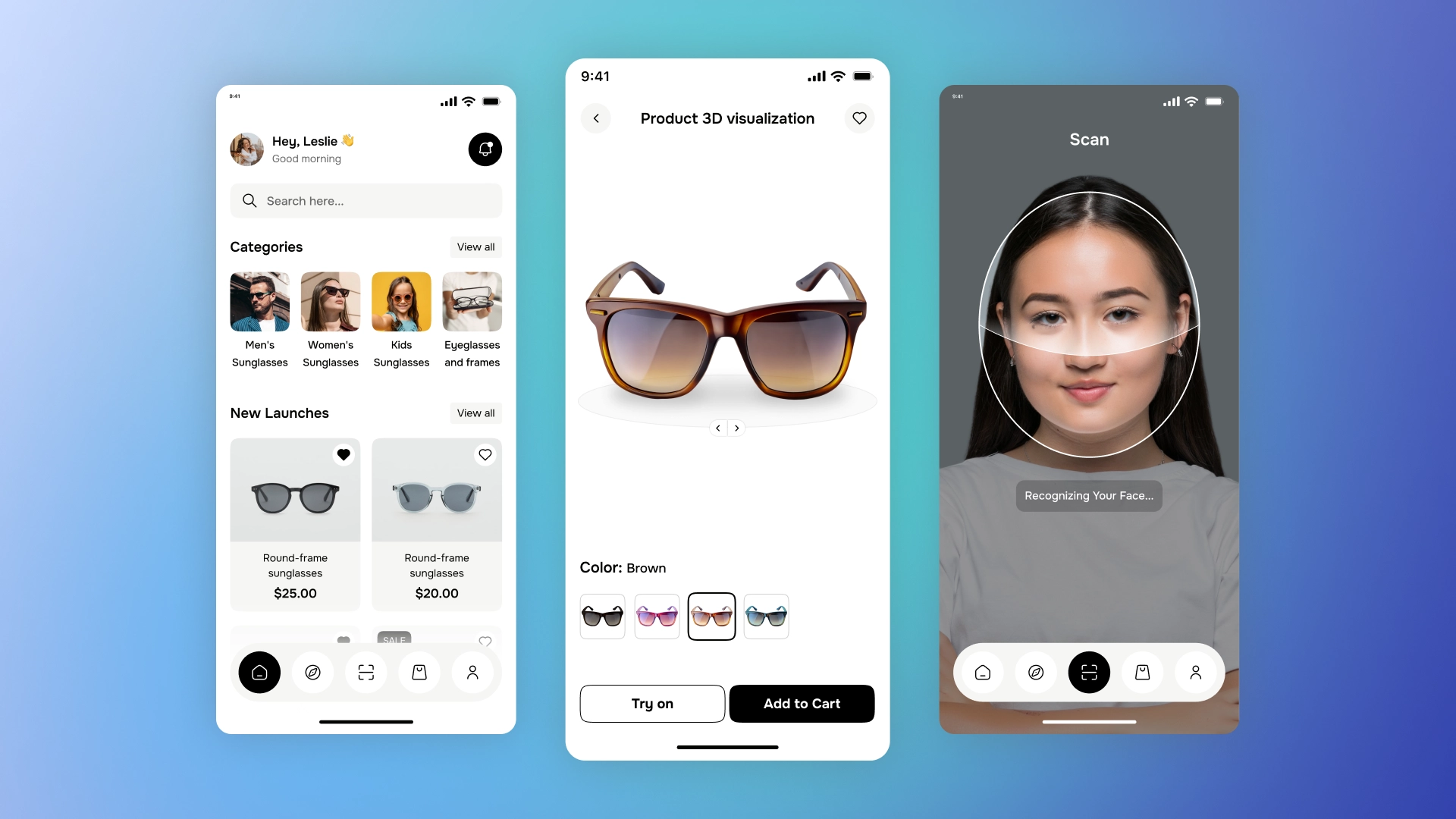
Why are mobile apps needed?
For businesses, a mobile application is an important tool for managing, interacting with customers, and automating processes right from a smartphone or tablet. Unlike classic web services, mobile applications provide instant access to functionality, high performance, the ability to work offline, and deep integration with other systems: CRM, ERP, payment services, analytics, and AI.
Modern mobile tools for business are developed in several formats:
- Native applications are designed for a specific mobile platform – iOS or Android, and provide maximum performance, stability, and full access to all device features – camera, GPS, push notifications, and sensors.
- Cross-platform mobile applications are solutions with a single code base for iOS and Android. They are suitable for projects where rapid launch and support for multiple platforms is important.
- A PWA application is a progressive web application that behaves like a mobile application: it is installed on the device screen, supports push notifications and partial offline operation. If you need a quick time to market and cross-platform functionality without the need to install from the app store, you should order a PWA application. It is ideal for complex B2B systems, mobile CRM or online stores with high requirements for speed, interactivity and integrations.
The choice of format depends on the business objectives, application goals, and expected user experience. We develop native applications in Kotlin for Android, Swift for iOS, cross-platform applications, and turnkey PWAs, selecting the optimal solution for each project based on requirements, deadlines, and budget.
What are mobile applications?
Mobile applications cover a wide variety of areas of business and life: from corporate tools for process management to eCommerce platforms, customer services, and specialized solutions.
Mobile CRM and ERP
Such applications turn a smartphone or tablet into a full-fledged tool for managing customers, deals and business processes. Managers and employees can monitor tasks and receive analytical reports and push notifications about key events.
- Mobile CRMs are focused on working with customers and sales. They allow you to maintain a customer base, monitor deals, manage the sales funnel, and maintain contact with customers without being tied to the office. The basic functionality of the system usually includes customer and deal cards, integration with accounting and production systems, instant messengers, and IP telephony, as well as push notifications about new leads and tasks, conversion and revenue analytics.
- Custom mobile CRMs with advanced functionality can include online configurators that allow customers and managers to choose the configuration of a product or item, calculate the cost, and immediately transfer the order to the sales department or production.
- Mobile ERP applications focus on managing a company's internal processes: finances, logistics, production, warehouse, personnel. They enable managers and employees to keep track of resources, control inventory, plan production volumes, and manage tasks outside the office.
AI modules can be built into mobile CRM and ERP. Intelligent chatbots and AI assistants help managers and employees work with data faster, formulate answers to customers and make decisions. For this, Large Language Models (LLM) are used in combination with the Retrieval-Augmented Generation (RAG) method. LLM generates natural texts and recommendations, and RAG provides access to current corporate data - customer database, transaction history, documentation and other resources. This combination allows you to receive accurate, personalized answers and reduces the risk of errors associated with outdated or incomplete information.
In custom CRM and ERP systems with AI, the following capabilities can be implemented:
- communication with customers through AI chatbots and voice assistants with 24/7 request processing;
- tips for employees – for example, communication scenarios, and for customers – when making an appointment with a doctor, choosing a product or service, and other processes of interaction with the application;
- classification and analysis of customer requests via calls, chats and email, routing of non-standard requests to managers;
- forecasting the probability of closing deals and assessing the effectiveness of processes.
Implementing AI in CRM and ERP directly impacts process efficiency, customer loyalty, and sales growth, providing a higher level of service. You can order the development of individual CRM/ERP systems based on AI from us.
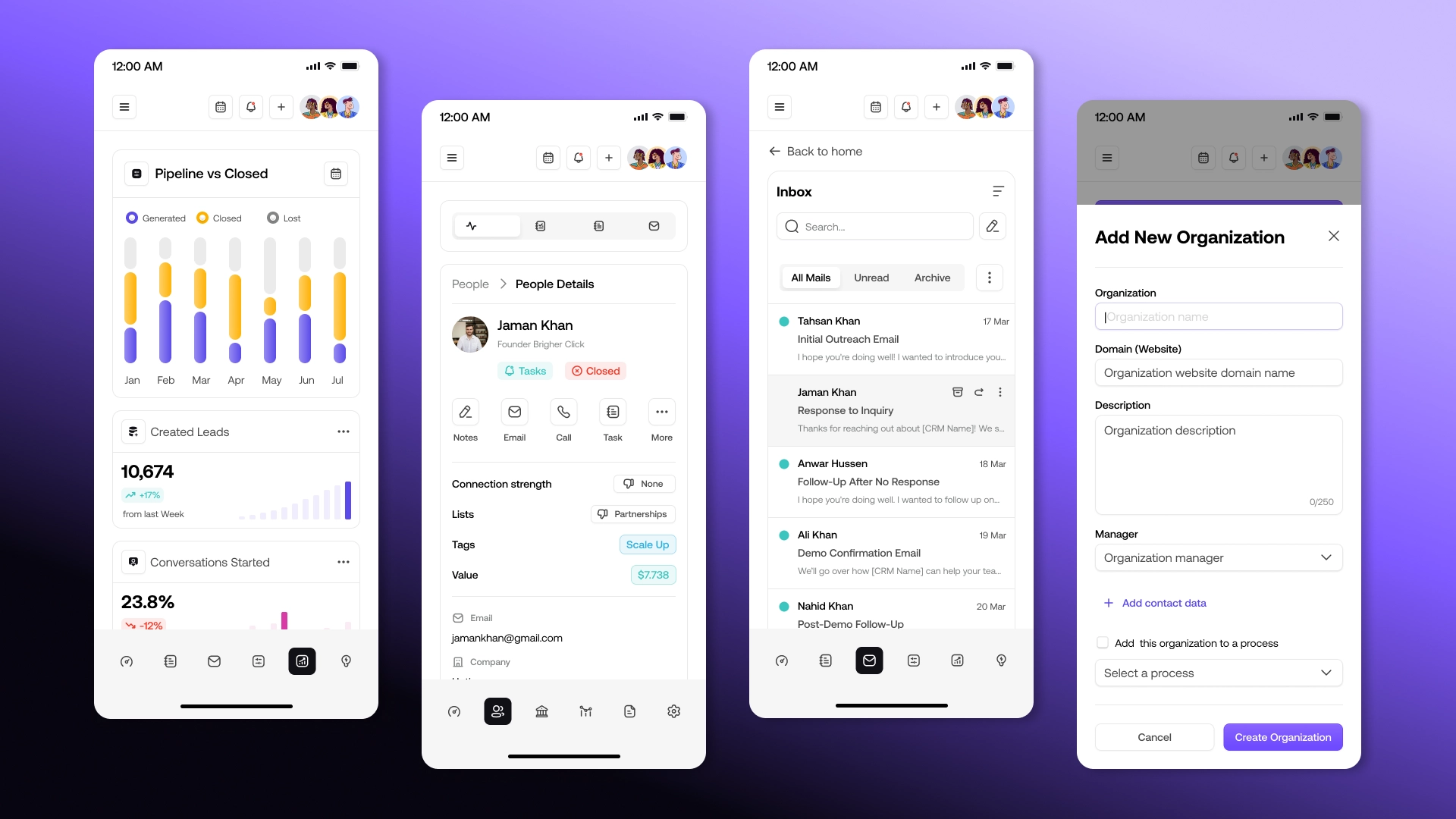
Mobile online stores and marketplaces
Developing an app for an online store allows you to sell goods and services 24/7, providing customers with convenient access. Apps implement catalogs and shopping carts, online payments, loyalty systems, personalized recommendations, product configurators, as well as delivery tracking tools and order status notifications.
Additionally, mobile online stores may include:
- AI recommendations based on purchase history and customer behavior to increase the average check;
- dynamic pricing and promotions that adapt to demand and client segment;
- integration with CRM and ERP for automatic transfer of data on orders, inventory and customer interaction;
- Personalized notifications and push messages that increase engagement and repeat sales.
The mobile version of the online store stimulates revenue growth and average check through personalized recommendations and configurators, retains customers through the convenience of the service, expands sales channels, reduces the burden on employees and speeds up order processing, and also makes it possible to scale the business to new markets and segments. More about eCommerce applications.
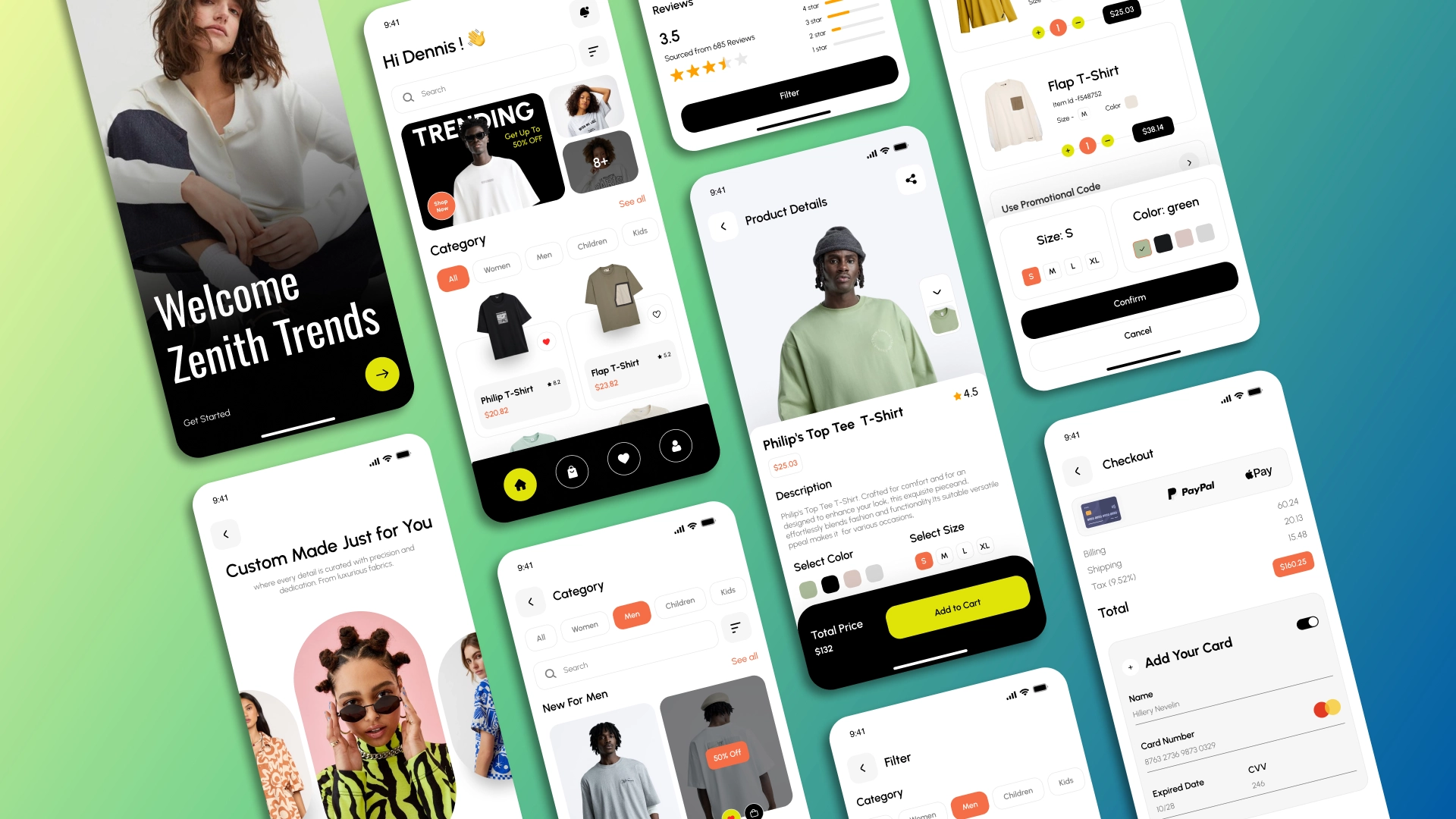
Responsive corporate websites for mobile devices
A mobile site provides convenient access to information about the company, services and products from any device. It allows customers to quickly find contacts, leave a request, view the catalog or sign up for a service.
The capabilities and functions of the mobile version of the site are practically not limited by format:
- adaptive interface with fast loading on smartphones and tablets;
- integration with CRM and ERP for transferring data about leads and inquiries;
- feedback forms, online booking, calculators and service configurators;
- support for multimedia content, news and promo blocks;
- personalized recommendations and push notifications to engage customers;
- integration with analytics services, in particular Plausible - a confidential and convenient tool for tracking website traffic.
The mobile version of the site provides convenient interaction with customers, an increase in the number of leads and applications, and an improvement in the company's image due to a modern and convenient mobile interface, integration with internal systems and AI agents to automate the processing of requests.

Internal corporate applications
Mobile corporate applications are needed to optimize internal company processes and increase team efficiency. They allow employees to share data, manage tasks, receive notifications about new projects, and monitor KPIs anytime, anywhere. For example, for the QSS web application, we additionally developed the QSS Inspector App, a tool for inspectors who inspect cargo on sea vessels.
AI modules can also be implemented into such systems to personalize recommendations for employees, automatically analyze task effectiveness, and offer optimal solutions within workflows.
Specialized and service applications
Highly specialized custom mobile applications that solve specific business tasks or create additional value for customers are also very popular. For example, betting applications with integration into sports and esports events, support for live odds, a real-time betting system and instant payouts. Betbol is an example of a mobile betting application developed by our team.
Additionally, in our portfolio you will find mobile review and rating services that allow businesses to collect customer feedback in a convenient way. Our Comexcel solution is one such project.
Smart home and IoT applications are also popular, providing remote control of equipment: from innovative locks and security systems to climate control and home appliances. Among our projects in this area is Magic Lock.
We are ready to bring even the most ambitious and niche ideas to life, creating applications for any community or even hobby. For example, in our portfolio you can see the Fishmaster application, designed for fishing enthusiasts.
Mobile and PWA applications for various business areas
A mobile application can be adapted to the specifics of a particular business, taking into account functional tasks, design, and user experience:
In the retail and e-commerce industry, a mobile app is the most effective channel for direct customer interaction. We develop intuitive and functional eCommerce mobile apps that turn one-time customers into repeat customers:
- online stores, online catalogs, marketplaces with convenient, clear interfaces and options for product selection, personalized offers, and quick order processing;
- loyalty programs - systems of bonuses, cashback, and personal discounts that encourage repeat purchases and strengthen the connection with the brand;
- internal applications for online and offline stores that allow you to manage inventory, track sales, and train staff.
In medicine, the implementation of mobile applications makes services more accessible to patients and optimizes workflows for medical staff. We can order mobile applications for medical centers and patients that improve the quality of service and reduce operating costs:
- services for online appointments with a doctor, viewing test results, receiving online consultations and other service packages for patients;
- scheduling management systems , access to electronic medical records, data exchange between specialists and automation of internal document flow. Here you can see our project for a dental clinic.
In the field of delivery and logistics, mobile applications are the key to effective management, minimizing delays and full transparency for all participants in the process. We develop mobile applications for courier services and logistics companies that reduce delivery times and increase efficiency. Key features include: real-time order tracking, delivery address management, route optimization, order information and reporting.

In the restaurant, tourism, and event businesses, implementing mobile applications helps create a unique experience for customers, increase their loyalty, and optimize workflows:
- mobile applications for the restaurant business are necessary for reserving tables, ordering food for takeout or delivery, as well as receiving personalized offers and bonuses;
- Entertainment and event apps are useful for purchasing event tickets, viewing show schedules, interactive guides, and interacting with augmented reality content.
- Mobile applications for hotels are needed to provide convenient online booking and service management on a smartphone.
In the manufacturing sector, such solutions increase work efficiency at all stages - from planning to product sales, provide equipment monitoring, inventory management, and product quality control.
In the financial sector, mobile apps simplify money management and increase brand trust. These include:
- mobile applications for account management, payments and transfers, expense tracking and investing, cryptocurrency wallets, such as our Rubicon Wallet project;
- trading and investment platforms that provide access to real-time market data and analytical tools, the ability to execute transactions at any time;
- fintech applications for microloans, digital asset management, and other innovative financial services that make them accessible to a wide audience.
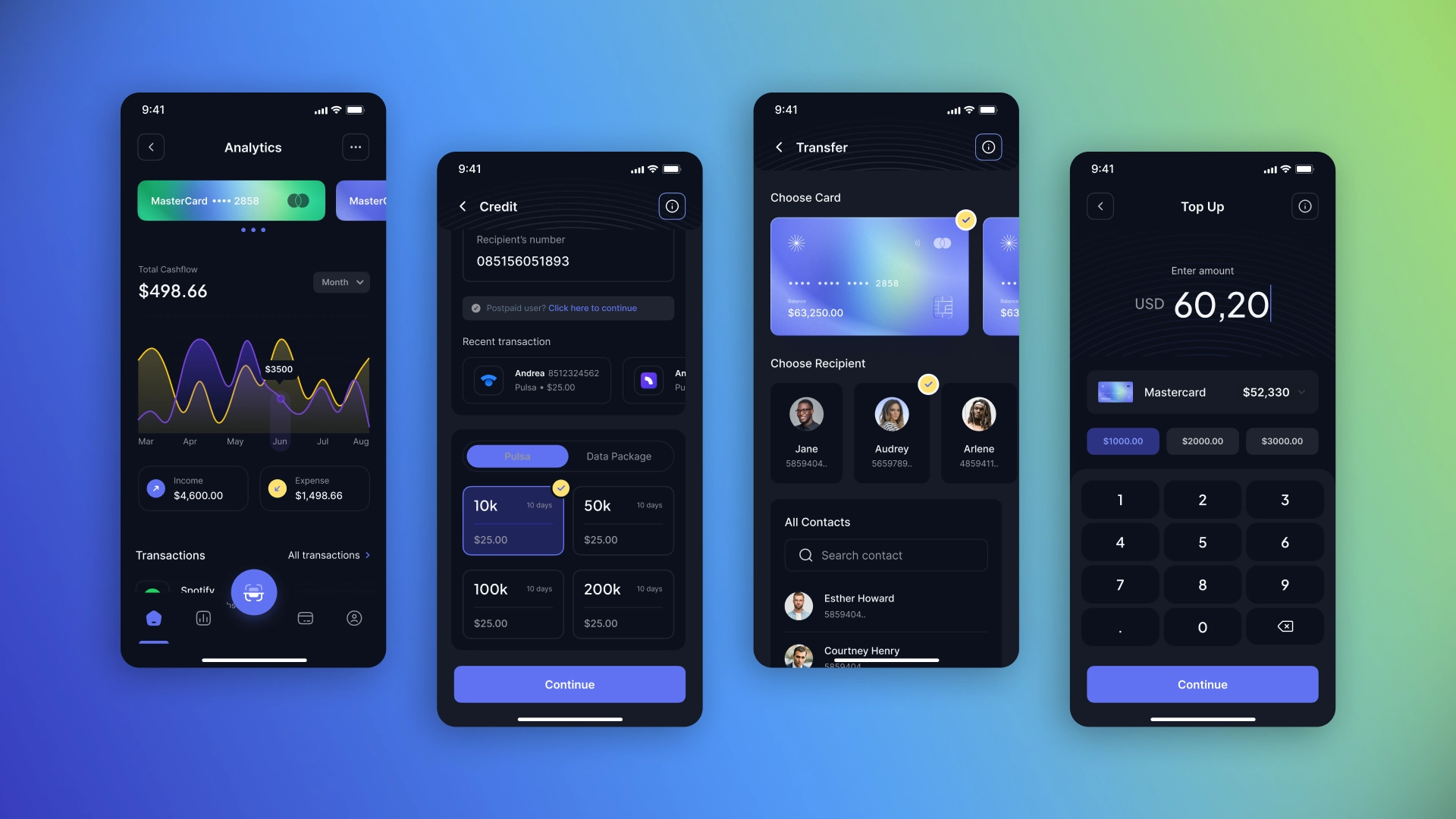
In agro-industrial complexes , mobile applications can increase yields and reduce costs by monitoring crops, managing irrigation, tracking weather conditions, and analyzing data in the application.
In the beauty industry, mobile apps help salons and stylists effectively manage their business by providing convenient and personalized service:
- offer clients online appointments for procedures and manage their schedule;
- maintain a client database and send automatic reminders;
- collect the customer's visit history and preferences to offer personalized promotions, discounts, and recommendations;
- "try on" a new hair color, makeup or manicure without leaving home, thanks to augmented reality (AR) technology.
Mobile CRM Helper is our development, which uses the best automation approaches for beauty salons.
In the field of education, mobile applications make products more flexible, accessible and interesting. Modern mobile learning applications provide the opportunity to learn new knowledge anytime, anywhere:
- programs with access to online courses , webinars, and educational materials allow students to learn at their own pace and track progress;
- interactive textbooks with multimedia elements, 3D models and tests that make the learning process more visual and interesting;
- internal corporate applications for adapting new employees, conducting training and improving skills.
We are ready to develop a solution that is ideal for your niche, regardless of its specifics and scale.

Stages of developing mobile applications for business
Mobile app development is a complex and multifaceted process that requires careful planning and coordinated team work. We transform your business idea into a high-quality and reliable product, adhering to the full development cycle.
1. Analysis and concept formation
Mobile application development begins with a deep analysis of the client's business model, its goals, and the needs of future users. Then, the necessary functionality and customization requirements are determined. Based on the analysis, the technical specifications and product implementation strategy are formed.
2. UX/UI Design
At this stage, the application architecture is created, usage scenarios and design are worked out. Moqups designs an interactive prototype of the interface to coordinate with the customer the structure, logic of the arrangement of elements and user scenarios before programming begins. UI designers develop an attractive design of the mobile application that matches the company's corporate identity.
3. Development and integration
This is the main stage where an idea is transformed into working code using a modern technology stack.
- For cross-platform products, the Flutter framework is used - the technology allows you to create a single code for different operating systems, which significantly reduces the time and cost of development, facilitates product support and scaling. Applications written in Flutter are flexible and productive, with smooth interfaces, animation support and fast response. Mobile application development for iOS and Android is relevant for applications with complex design and custom animation.
- For native solutions, Swift (for iOS), Kotlin , and Java (for Android) are used - with such technologies, you can ensure high performance, connection to the hardware capabilities of the device, or deep integration with the platform.
- PWA applications use frameworks and tools such as React + Next.js , Angular, Vue.js , as well as service workers and Web App Manifest to support offline mode, push notifications, and device installation.
The backend is implemented using modern technologies: Node.js, NestJS, Django, Laravel or .NET Core - the choice depends on performance and architecture requirements. Also at this stage, databases (PostgreSQL, MySQL, MongoDB), API, microservice architecture and integrations with external services (CRM, ERP, payment systems, analytics systems) are configured.
4. Testing and Launching
Before release, the application undergoes multi-level testing on different devices and operating systems. Our QA engineers use automated scripts and manual verification of correct functionality, UX usability, data security, and stability under load. After that, we prepare the release and launch the product into operation.
If necessary, we publish the application on the App Store and Google Play and connect analytics systems to track user behavior and application performance. Additionally, we train employees and provide documentation.
5. Support and development
We are ready to become a reliable partner for the long-term development of your mobile application, so after launch we offer further support. As part of technical support, we ensure stable operation and regular updates taking into account new requirements of iOS, Android, App Store and Google Play. As the business grows, we scale the application and develop its functionality for new tasks and markets.

How to order a mobile app for business?
We create mobile solutions that help businesses grow and remain competitive. Our specialists adapt applications to any tasks and create them using modern technologies and tools. For each project, we form a dedicated team : a project manager, mobile developers, UX/UI designers and QA engineers at senior and middle levels, which guarantees a high-quality result and a full development cycle. The work is built on the flexible Agile/SCRUM methodology, so you can monitor progress at each stage and quickly make changes.
Contact us right now to order the development of an application for Android and iOS of any format and purpose: CRM, ERP, online stores, service applications and specialized solutions for the industry.
With AVADA MEDIA, you get not just turnkey mobile application development, but a reliable technology partner that helps you scale the product, develop functionality, and increase the efficiency of your business.
FAQ
-
How much does it cost to develop a mobile app?
The price of mobile app development depends on the functionality, design complexity, number of integrations, and chosen platform. We evaluate each project individually to offer the optimal solution at an affordable price.
-
How long does it take to build an app with Flutter?
The timing directly depends on the scale and complexity of the project. Basic solutions can be launched in a couple of months, while a large mobile application on Flutter requires more time. We create a roadmap and regularly inform the customer about the progress to make the process transparent and predictable.
-
What data is needed to start development?
To get started, it is enough to describe the business objectives and understand the target audience. If you have a ready-made technical specification or examples of other products, this will speed up the process. Based on the data provided, we conduct an analysis and form project documentation.
-
Do you work with custom animation and complex design?
Yes, our team has experience in creating interfaces with unique visual solutions and complex animations. We use modern tools to implement smooth transitions and interactive elements. The correct design of a mobile application helps to distinguish it in the market and increase user engagement.
-
Can the mobile app work offline?
We can implement an offline mode, in which key data and functions remain available even without an Internet connection. When the connection is restored, the information is automatically synchronized with the server. This functionality is especially in demand in CRM for field employees, logistics and service applications, where it is important to have access to the customer base, schedule or tasks regardless of the quality of the connection.
-
Can the customer independently manage the content of the application?
Yes, we develop convenient administrative panels that allow the customer to independently add and change texts, images, products and services without the intervention of developers. Such a tool simplifies daily work and speeds up application updates.
-
How does app design development affect the price?
The cost of a mobile application largely depends on the complexity of the interface and the level of customization. The more unique elements, animations, and interactive scenarios you need to implement, the higher the price of the project. We always select the best option: from MVP to premium design that can distinguish your application in the market and increase user engagement.
-
Can I start with basic features and scale the app in the future?
We design the architecture so that it is easy to scale. If you need to quickly develop a mobile application, ordering an MVP and then gradually adding new modules, integrations and services is the best option for you. This approach helps you get to market faster and adapt the product to new business needs at the same time.
-
Can I order VR apps for Android from you?
Yes, we develop such solutions for any business tasks: employee training, product and service presentations, virtual showrooms, game projects. We also implement AR technologies - for example, for virtual fitting of products, visualization of furniture in the interior, interactive instructions.






